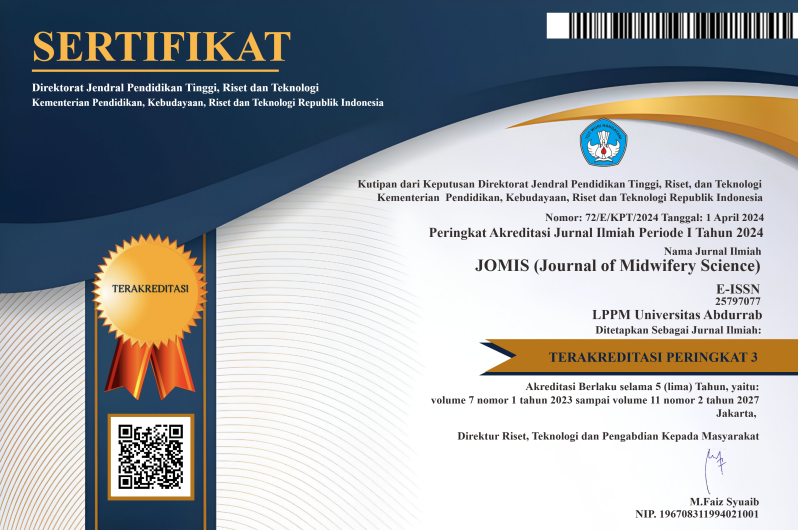TEKNIK MARMET TERHADAP KELANCARAN ASI PADA IBU POST PARTUM
DOI:
https://doi.org/10.36341/jomis.v7i1.2800Keywords:
Marmet technique, breastfeeding smoothness and postpartum mothersAbstract
Breastfeeding failure is often caused by psychological factors of the mother in the early days of the breastfeeding process. Mothers often feel afraid that the milk produced is not sufficient for their baby's needs. If breastfeeding in the early period of birth cannot be done, the next best alternative is to express or pump breast milk for 10 - 20 minutes every two to three hours until the baby can suckle. This action can help maximize prolactin receptors and minimize the side effects of delayed breastfeeding in infants. This study uses a Quasy Experiment Design (Pseudo Experimental Design) by using the One Group Pretest-Postest Design. The population and sample in this study were all postpartum mothers totaling 40 people. This study uses a Porposive Sampling technique with univariate and bivariate analysis with T test. Research obtained from data analysis with the Wilcoxon test. The purpose of this study was to determine the effect of the marmet technique on the smoothness of breast milk in post partum mothers. The results in the table show that the P-Value (0.001) <0.05 then Ho is rejected and Ha is accepted, which means that there is an effect of marmet technique on the smoothness of breastfeeding in postpartum mothers. The recommendation in the researcher is that the marmet technique is effective to carry out breastfeeding in postpartum mothers and the marmet technique can stimulate an increase in the hormones prolaksin and oxytocin which has a relaxing effect on postpartum mothers so that this can be practiced for postpartum mothers.
Downloads
Downloads
Published
Issue
Section
License
1. Copyright of all journal manuscripts is held by the JOMIS : Journal of midwifery scinece
2. Formal legal provisions to access digital articles of electronic journal are subject to the provision of the Creative Commons Attribution-ShareAlike license (CC BY-NC-SA), which means that JOMIS : Journal of midwifery scinece is rightful to keep, transfer media/format, manage in the form of databases, maintain, and publish articles.
3. Published manuscripts both printed and electronic are open access for educational, research, and library purposes. Additionally, the editorial board is not responsible for any violations of copyright law.
licensed under a Creative Commons Attribution-ShareAlike 4.0 International License.









